Indoor hibiscus, as well as outdoor hibiscus, offer magnificent flowers over a long period of time.
Key Hibiscus facts
Name – Hibiscus rosa sinensis
Family – Malvaceae (mallow family)
Type – indoor plant
Height – 1 ⅓ to 5 feet (0.4 to 1.5 meters)
Exposure – well-lit
Foliage – evergreen if grown indoors
Flowering – March to November
Practically the epitome of a flowering plant, hibiscus is very easy to care for, and the following advice helps ensure that the blooming period lasts as long as possible.
Here are all the tips and guidance to care for your hibiscus in the best possible manner.
- If you would rather have advice on growing althea, the most common outdoor hibiscus, follow this link.
Planting and re-potting your hibiscus
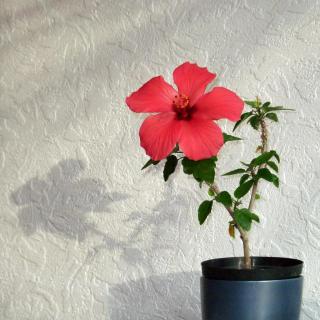
China rose likes feeling a bit tight in its pot.
- Repotting is generally performed in March, before plant growth resumes.
- Choose a pot that is slightly larger than the previous one.
- Ideally, prepare one part soil mix and one part heath.
- Place at the bottom of the pot a bed of gravel or clay beads to ensure drainage.
Planting a hibiscus outdoors
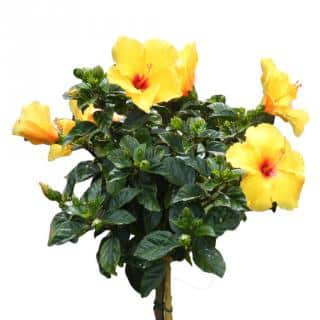
Indeed, a hibiscus cannot survive temperatures below 40°F (5°C) and can only make it through the winter in climates where it strictly never freezes.
If there is any risk of frost, then it is better to keep the plant in a pot. Doing so makes it possible to bring it indoors, for example in a greenhouse, for the winter months from October to April or May.
- Choose a sun-bathed area, sheltered from stronger winds.
- Plant your China rose in a mix of garden soil, soil mix and heath.
- The hibiscus variety that copes well with colder climates is the althea variety, also called rose mallow.
Propagating hibiscus
- Cuttings in spring or summer.
Pruning and caring for indoor hibiscus
Your hibiscus will be all the more beautiful and full of flowers if you prune it at the beginning of spring.
- Prune lightly, focus on remodeling the silhouette delicately in March.
During the growth phase, add flower plant fertilizer to spur vegetation and ensure that your China roses will bloom spectacularly.
Watering hibiscus
Watering hibiscus in spring and summer
This is the growth period, and water needs are the highest. It is nonetheless crucial to not drown roots and let the ground dry up before watering again.
Watering once or twice a week should be enough.
Watering hibiscus in fall and winter
When your hibiscus has entered dormancy, start reducing water input to match ambient temperatures.
- The cooler it is, the less water a plant needs.
Diseases and parasites attacking hibiscus
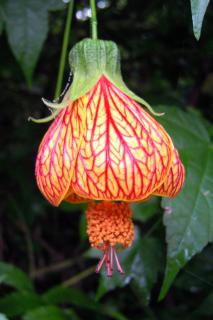
- This is often due to excess heat or exposure to the sun is too strong.
- It may help to place the pot in a basin of soft or non-hard water for a short while and then drain it out.
Leaves are sticky and pasty and little insects invade leaves:
- This is an aphid attack, here is how to fight aphids.
Leaves are covered with a white cottony felt:
- This is most probably an attack of scale insects, here is how to fight scale insects and treat the plant.
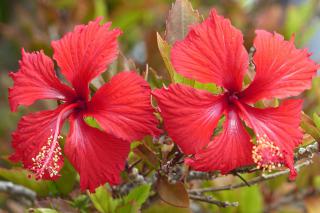
- This is connected to excess water. Wait until soil surface is dry before watering again.
- Avoid cold breezes or sudden changes in temperature.
Flower buds fall off before blooming:
- This is often related to excessive air dryness.
- Avoid setting the plant near a radiator or an overly exposed window.
- Place the pot on a bed of gravel or clay pebbles doused in water.
Smart tip about hibiscus
To boost flower-bearing, remove wilted flowers regularly (deadheading).


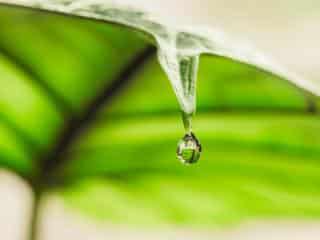


Afraid my Confederate Rose is dying, leaves turning yellow & dropping off. It is well over 6ft. tall and is full of blooms. So hate to lose it. Your thoughts?
Hi Barbara! With that height, I’m supposing it’s outdoors, planted in the ground – correct me if I’m wrong. A typical cause of leaves turning yellow is a form of root rot. This happens when the soil doesn’t drain well anymore, or when watering more than the soil can drain away. As a first step, check if the soil seems soggy around the roots, about an inch (3cm) below the surface. The bark of roots might also look swollen and seem to peel off easily when you chip at it. If that’s the case, it’s really hard to save your plant, since usually the rot is well settled in already.
Here are a few tips you can try to save your plant:
– Water when absolutely necessary.
– Clear the root collar around the tree and let the soil dry out.
– Only water when you see the soil is dusty dry down to an inch or two (rake topsoil off to reach that point, test, and then put it back).
– When you do water, add a bit of fungus-fighting fermented weed tea (horsetail is good for that).
As to why this would only occur now, it’s hard to say. Sometimes fungus take time to spread, or a particularly rainy spell over a few weeks gave it the sogginess it needed to really develop.
Thank you so much for your reply. Just reading this so will try what you suggest and hope the plant gods are up and paying attention. When moving here, six years ago, had to leave my wonderful mallow at old house. Have planted mallow seeds I got from you and they are up about 4 or 5 inches. So hope they grow well. Will let you know if my Confederate Rose makes it or not.
Please do share updates! In any case, you can start preparing confederate rose cuttings from it to have young ones to plant if ever things go awry :/
Thank you Bilou
Thank you ! I see your family hibiscus is ready for spring!